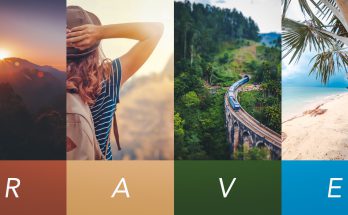Depending on how you count them, France has about 15 wine regions, each with its own varieties of grapes, wine styles, and accompanying foods. The terroir of each region, that is, the differences in soil, climate, geography, and winemaker’s styles, make up the rich fabric of French diversity that makes it so very charming. Here’s a little Wine Tour de France as you dream up your next French wine regions trip!
Alsace and Lorraine
Alsace is a part of France that has a tangled history with Germany and as such, you’ll find similarities in terms of food, wine, and culture.
Home of the Gewürtztraminer, Riesling, and Sylvaner grapes, among others, you’ll find these white Alsatian wines paired with local pork, potato, and sauerkraut dishes.
North of Alsace are several smaller appellations that used to be part of a larger wine region called Lorraine, that had produced sparkling wines and Rieslings, but thanks to phylloxera (a root-destroying insect that plagued French vines around the 1860s), land misuse, WWI occupation, and a law passed disallowing sparkling wines made outside of Champagne to be called Champagne, the region of Lorraine lost much of its wine production. The main (former Lorraine) appellations to look for: Côtes de Meuse, Côtes de Moselle and Côtes de Toul.
Bordeaux
Bordeaux and Burgundy arguably produce the very best French wines, and each merits its own separate tour.
Bordeaux’s reds are famous around the world because of the 1855 Classification in which several vineyards were recognized as having superior terroirs. The “Bordeaux blend” is the combination of Cabernet Sauvignon, Merlot and Cabernet France (and sometimes Petit Verdot) grapes that makes a red Bordeaux a red Bordeaux.
The lesser known fact is that Bordeaux produces many red, white, rosé, sweet, and sparkling wines that are delicious and affordable
I am partial to Bordeaux wines, having lived in Bordeaux for three years and having witnessed the year-round dedication winemakers show their vines and wines. I began my own French gastronomic journey in Bordeaux that resulted in my book of traditional French cuisine and wine, called The Bordeaux Kitchen.
Burgundy
Burgundy has some of the rarest wines in the world because many of its wines come from tiny patches of land comprising only a few rows of vines. Burgundy is a culinary epicenter from which beef burgundy and coq au vin originate. If you want to explore either of these dishes, both recipes are in my book.
The Beaujolais appellation is at the southernmost part of Burgundy and the home of the “natural wine” movement that began in the 1960s. With appellations like Chablis, Beaune, Mersault, Côte de Nuits, Pouilly-Fuissé, in Burgundy you will find the most complex pinot noir and chardonnay wines in the world. But again, you can find many high quality, but affordable red and white Burgundy wines that will make lasting impressions on your taste buds, with landscapes so pleasing you won’t want to leave.
Champagne
Champagne is situated in the north of France, a relatively short drive from Paris. The grapes that make up this sparkling wine are pinot noir – a red grape that provides acidity, aromas, body, and structure – and chardonnay – a white grape paired with pinot noir to provide freshness and elegance to the Champagne. Only Champagne from Champagne may be called Champagne! Everything else is sparkling wine. The subtleties between one Champagne style and another are as astonishing as the seemingly endless bubbles that rise up in the glass.
Corsica
This island of rustic landscapes is more than 3,300 square miles, has over 600 miles of coastline, and has 8 main wine regions amidst its rocky, hilly Mediterranean soils. It shares wine varieties with its Mediterranean neighbors of Provence and Tuscany, Italy, among them, Nielluccio (aka Sangiovese), a red grape with good tannic structure and notes of fruit and spice, and Vermentino (aka Rolle or Malvoisie), a white grape with notes of apple, apricot, peach, and pear. From rustic and flavorful to elegant, these lesser known wines are worthy of attention, and Corsica is definitely on my France destinations bucket list.
Jura, Savoie, and Bugey
The mountainous region of the Jura borders on western Switzerland and offers so-called yellow wines (vin jaune) and straw wines (vin de paille – where the grapes have been left to dry on straw.) Jura cheeses, which pair perfectly with Jura wines are among my personal favorites – the ultra creamy Mont d’Or (aka Vacherin) and the hard, aged cow cheese called Comté. South of the Jura, are the vineyards of Savoie and Bugey, also near Switzerland, offering fresh, crisp red, white, and rosé wines. Other attractions include alpine ski resorts, alpine lakes, and breathtaking landscapes to go with the lovely local food and wines.
Languedoc-Roussillon
East of the French Southwest and west of Provence, leading from inland to the Mediterranean Sea, Languedoc-Roussillon is a large and an under-discovered wine region that produces a wide variety of red and white grapes to match its varied landscapes. Local, affordable wines offer a glimpse of the local character and flavors of the region, such as a citrusy Picpoul de Pinet that pairs well with fish, or a sweet red Banyuls that can be a dessert unto itself.
The Loire Valley
You probably wouldn’t want to tour the beautiful châteaux of the Loire Valley without sampling the lovely wines, often made at the châteaux. The Loire Valley produces the third largest volume of French wine, after Bordeaux and the Rhône Valley. Red grape varieties include fruity Gamay, tannic Cabernet Sauvignon, and high-acidity Pineau d’Aunis.
White grape varieties include the full-bodied, vanilla-flavored Chardonnay, floral and fruity Chenin Blanc, and high-acidity Melon de Bougogne. But don’t miss the crisp, flinty white Sancerre wines or the red, light-bodied Bourgeuils made with Cabernet Franc. Loire Valley wines are affordable and delicious, and particularly memorable if you bought it at one of the many châteaux you may have fallen in love with on your tour.
Provence
Provence, replete with Roman ruins, fairy-tale villages made of stone, olive trees, and lavender fields, traditionally produced rosés but has expanded its gamut in recent decades to include reds and whites. While touring the inspiring countryside, you will inevitably sample the local delicacies (inevitably containing garlic and olive oil) and wines, and enjoy a part of France made particularly famous to Anglophones by the charming books of Peter Mayle, such as A Year in Provence.
The Rhône Valley
The Rhône Valley is situated between the Burgundy region to the North and Provence’s vineyards to the South. The northern Rhône produces only about one tenth of Rhône Valley wines but includes one of France’s most celebrated wines: Hermitage, from the Côte-Rôtie (literally “roasted slope”), where, like in Burgundy, small plots of land create a famous and rare wine. Syrah and Grenache red grapes are typically in wines from the Rhône Valley.
Lesser known and even organic wines can be found as you meander through this hilly landscape dotted with wine villages, with famous appellations like Châteauneuf-du-Pape, Gigondas, and Vacqueyras.
The French Southwest
The French Southwest is synonymous with gastronomic traditions of pairing local wines with local foods, and cooking everything in duck fat. This large region deserves a lifetime of exploration, from the brandy of Armagnac to the sweet wines of Jurançon, and all the reds, whites, and rosés in between. In the appellations of Bergerac, Cahors, Gaillac, Irouleguy (Basque country), and Madiran, among others, there is a rich, varied cuisine and choice of wines that together are a sheer pleasure to savor as you learn about the local traditions among the winding roads, pastures, orchards, and vineyards.
What Grows Together Goes Together
For further research, especially if you love colorful maps that portray every wine region around the world in beautiful detail, I recommend one of my favorite books, The World Atlas of Wine by the venerable English wine writers, Hugh Johnson and Jancis Robinson. With so many choices, focus on your favorites and build your wine tour around that, adding others where possible. No matter what French wine region you choose, you are sure to be charmed!



